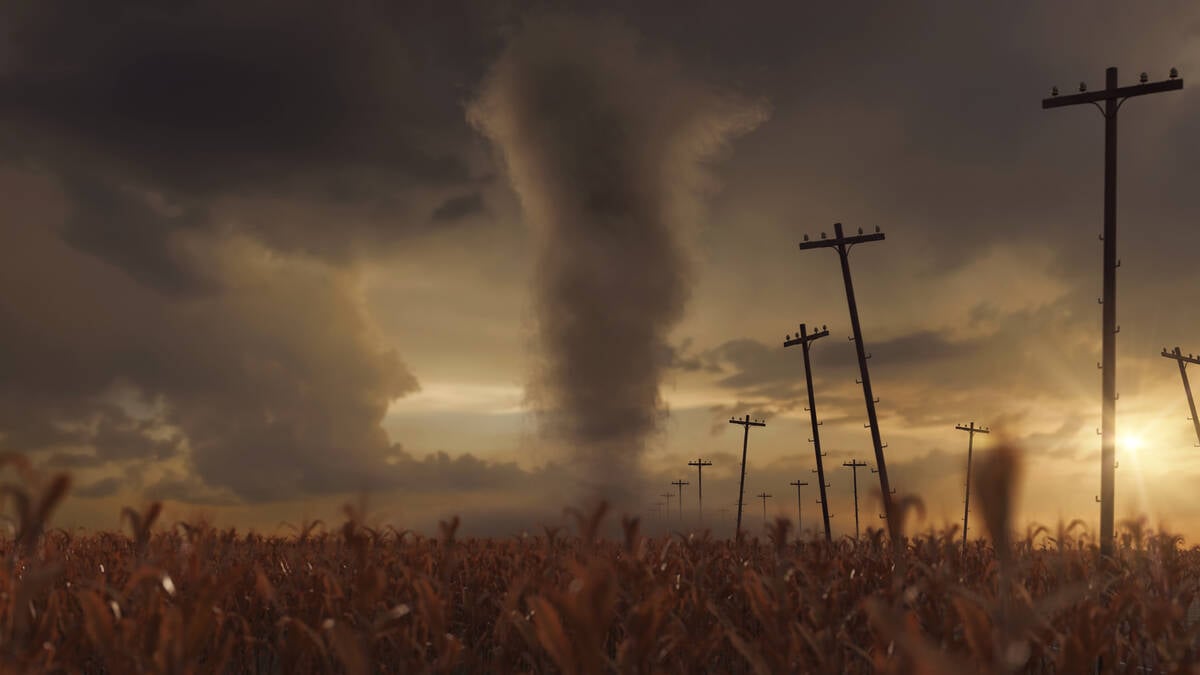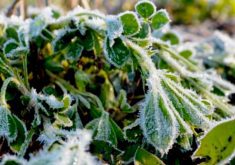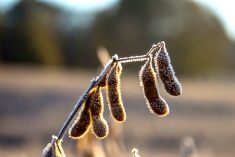With fall coming on strong and frost risk climbing, many canola growers are wondering what to do with standing canola. The Canola Council of Canada’s CanolaWatch has the following recommendations for before and after a frost.
For canola that you’ll be swathing
If frost is forecast, should you swath canola now or leave it standing? The answer depends on (at least) two things: (1) How far advanced is the crop? (2) How cold will it get?
Here are the four scenarios that these two questions present, and considerations for all four.
Read Also

Types of tornado mimics
Not everything with spinning winds on the Canadian Prairies is a tornado. From dust devils to cold-core funnel clouds, there are a number of weather phenomenon that fit the description.
- Crop is past 30 per cent seed colour change (SCC) on the main stem, plants have relatively few side branches, and heavy frost is forecast.This is not the ideal SCC for yield, but at 30 per cent SCC, most of the seeds will be firm to roll. You may want cut this ahead of the frost to prevent locking in green on the most immature seeds. Note however that crop needs to dry down to a seed moisture level of 20 per cent or less to be relatively safe from the damaging effects of frost.
This can take three good drying days, so swathing has to occur at least three days before the frost to achieve this benefit.
- Crop is past 30 per cent SCC, green seeds are firm to roll, and light frost is forecast.The degree of frost is hard to predict, so will a light frost really be light? That is a question we can’t answer here, but going on the gut feeling that frost will be light, leave this crop standing. It would have to be cut about three days before the frost to get pods dried enough to keep them from popping open.
- Crop is at 5 per cent SCC and heavy frost is forecast.At 5 per cent SCC on the main stem, this crop is really green and a heavy frost will bring high yield loss and lock in high amounts of green for those seeds that do make it to the combine hopper. The best option is probably to leave it standing and take your chances that the frost is light and the crop will have a few more days to mature.
Each additional day standing will benefit this crop. Research conducted by the Canola Council of Canada over approximately 28 site-years indicates that significant yield increases could be achieved by swathing at 60-70 per cent seed colour change (SCC). Swathing at 60 per cent SCC resulted in 8 per cent more yield (which was equivalent to about 3 bu./ac.) than at 30-40 per cent SCC, 12 per cent more yield than at 10-20 per cent SCC, and 19 per cent more yield than swathing before 10 per cent SCC. Swathing at 5 per cent SCC in anticipation of the frost could reduce yields by 20 per cent or more.
- Crop is at 5 per cent SCC and light frost is forecast.This crop will benefit from all the standing time it can get. Wait out the frost, but monitor afterwards to assess the degree of pod damage and increased risk of shelling if left standing after a harder frost than expected.
Further considerations
Many nights of frost. If frost is forecast for several nights in a row, canola with a high percentage of green immature seed might not have much chance to mature further. Growers could cut the crop and accept that any yield potential from immature seed is likely lost.
Logistics and timing. If growers still have a lot of canola to swath, they may need all the swathing days they can get. If today is a good day to swath, then go swathing but know that any yield potential from immature seed will likely be lost.
Crop standing for straight combining. Frost can actually be a benefit as it provides some extra dry-down of green stems. Note, however, that frost at the point when pods are brittle and quite dried down will likely have little-no impact, and pod-shatter tolerance can also help maintain pod integrity if the crop wasn’t quite that dry yet.
For canola left for straight combining
Frost provides some natural desiccation that may help dry weeds and green stems in fields left for straight combining.
Some growers actually wait for frost before combining, using it as a tool to aid in crop dry down — but this may not be advised if the field is ready and no frost is forecast.
After a frost, do watch the pods for shatter. Straight combining may be best performed shortly after a frost if pod shatter seems likely. Urgency may not be as high for varieties with pod shatter tolerance.
When heavy frost hits a variable crop left for straight combining, seeds still green will have the green locked in by a heavy frost. In this case, growers may want to combine high quality areas first and leave uneven high-green areas for later. Straight combining makes it easy to cut around green areas. This would be better than pushing through the green areas and having these immature seeds in the middle of a bin.
Should you swath instead? If standing canola is within the swath window when frost strikes, swathing is a back-up option. Keep in mind that swathing means you’ll handle these brittle crops twice and may create just as many losses as leaving the field standing.
The morning AFTER the frost, go through these steps:
- Take a look in the morning but before taking any action, wait 4-6 hours after frost to allow the full extent of frost damage to become evident. The crop may look undamaged in the morning but by the afternoon wilting, desiccation and pod splitting may begin. This crop may need to be swathed to preserve yield, but keep in mind that high green counts are likely.
- Light to moderate frost damage may take longer to show up. If no damage is evident after the first day and you decide to leave the crop to mature more fully, scout again after 2-3 days to reassess.
- If most or all seed is mature and you planned to swath the day after a frost anyway, then don’t bother waiting 4-6 hours. Just start swathing.
Responses for heavy or light frost
Heavy frost… below -2 C
Assess the damage in early afternoon. Check pods for a white, wilted appearance. Pod shatter and pod drop could begin within a day, especially with warm sunny afternoons. If pods are desiccating rapidly, swathing right away will preserve as much yield as possible.
For canola with high seed moisture, frost in excess of -5 C is generally lethal, resulting in non-viable seed. At such low temperatures, ice crystals physically disrupt structures such as membranes and enzymes. Pods of immature canola crops frozen at lethal temperatures have been observed to turn black, whereas mild frost turns pods white or white-speckled.
Light frost… above -2 C
Hold off swathing. Check in the afternoon for wilting to make sure frost damage was not heavier than expected. You may see some speckling on the stem and pods, but this is of little concern as long as the plant is still alive. If no wilting, leave the crop standing and check daily
What to look for during daily monitoring
If the majority of the seeds remain green and immature, delay swathing to allow for further seed maturity.
If the pods are severely damaged and are beginning to desiccate, swath during periods of dew or high humidity to reduce the amount of pod shelling and pod drop.
Frost and quality. A killing frost will reduce quality, but that can’t be helped — whether you swath today or wait. Immature seeds (moisture content higher than 20 per cent) will be damaged. Seeds with less than 20 per cent moisture will normally escape damage. Green seed is the major downgrade that results from frost.
Source: Canola Council of Canada/CanolaWatch.org



















